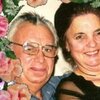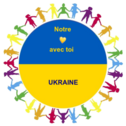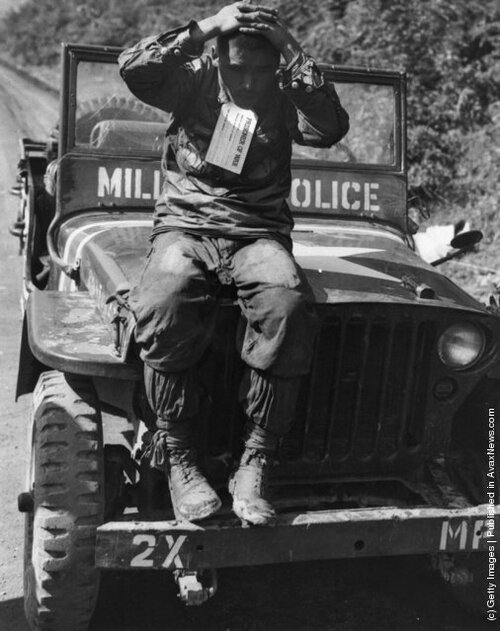-
Photos Anciennes: Guerre de la Corée
Guerre de la Corée
25 juin 1950 - 27 juillet 1953
La guerre de Corée a lieu du 25 juin 1950 au 27 juillet 1953 entre le République de Corée (Corée du Sud), soutenue par les Nations Unies, et la République populaire démocratique de Corée (Corée du Nord), soutenue par la République populaire de Chine et l'Union soviétique. Elle résulte de la division de la Corée (en) suite à un accord entre les Alliés victorieux de la guerre du Pacifique à la fin de la Seconde Guerre mondiale. La péninsule coréenne était occupée par l'empire du Japon depuis 1910. Après la reddition du Japon en septembre 1945, les États-Unis divisèrent la péninsule le long du 38e parallèle, avec au sud des forces américaines d'occupation et au nord des forces soviétiques.
L'échec de tenue d'élections libres dans la péninsule en 1948 aggrava la division entre les deux côtés ; le Nord établit un gouvernement communisme, tandis que le Sud établit un gouvernement capitaliste. Le 38e parallèle devint une frontière politique entre les deux États coréens. Bien que les négociations pour la réunification continuèrent dans les mois précédant la guerre, les tensions s'intensifièrent. Des escarmouches et des raids inter-frontaliers persistèrent. La situation se transforma en guerre ouverte lorsque des forces du Nord envahirent le Sud le 25 juin 1950. En 1950, l'Union soviétique boycotta le conseil de sécurité des Nations Unies. En l'absence d'un veto de l'Union soviétique, les États-Unis et d'autres pays passèrent une résolution autorisant une intervention miliaire en Corée.
Les États-Unis fournirent 88% des 341 000 soldats internationaux qui aidèrent les forces du Sud, complété par l'assistance de vingt autres pays. Accusant de lourdes pertes durant les deux premiers mois, les forces du Sud durent se replier sur le périmètre de Busan. Une rapide contre-offensive de l'ONU repoussa les Nord-Coréens au-delà du 38e parallèle, presque jusqu'au fleuve Yalou, quand la République populaire de Chine entra en guerre du côté de la Corée du Nord. L'intervention chinoise força les forces alliées au Sud à se replier derrière le 38e parallèle. Alors qu'elle n'amena pas directement de troupes sur le terrain, l'Union soviétique fournit de l'aide matérielle aux armées chinoise et nord-coréenne. Le conflit prit fin le 27 juillet 1953, lorsqu'un armistice fut signé. L'accord restaurait la frontière entre les Corées près du 38e parallèle et créait la zone coréenne démilitarisée, une zone tampon fortifiée entre les deux nations coréennes. Des incidents mineurs continuent de se produire encore aujourd'hui.
Du point de vue militaire, la guerre de Corée combine les stratégies et tactiques des deux guerres mondiales : elle commence par une rapide campagne offensive d'infanterie suivie par des bombardements aériens, mais devint une guerre statique à partir de juillet 1951.
A North Korean prisoner of war awaits his fate. (Photo by Keystone/Getty Images). 1950
Korean war refugees in the Inchon area, coming in to the US contingent of the United Nation's Forces for aid. (Photo by Picture Post/Getty Images). 1950
South Korean political prisoners in Pusan, during the Korean War. (Photo by Bert Hardy/Getty Images). 1950
An American soldier from South Carolina reports from a field post “somewhere in Korea”, where the Southern Koreans and forces of the United States are battling against the Communists from the North. (Photo by Keystone/Getty Images). 1952
A severely wounded Korean soldier smoking a cigarette in the grounds of an advance casualty cleaning unit. (Photo by Haywood Magee/Getty Images). 1950
An American soldier relaxes by taking a footbath in a spare helmet whilst reading a magazine, during the Korean War. (Photo by Keystone/Getty Images). 1950
A dramatic shot of 155mm Howitzer fire during night action in the Korean War. (Photo by Keystone/Getty Images). 1952
An American soldier patrolling the streets of Inchon after the capture of this key port during the Korean war, is watched by a young Korean child. (Photo by Bert Hardy/Getty Images). 1950
Suspected Communists captured near the lines are brought in for questioning, and later released during the Korean War. (Photo by Keystone/Getty Images). 1950
A South Korean soldier on guard at Taegu mission school, which served as a POW camp during the Korean War. (Photo by Bert Hardy/Getty Images). 1950
US Marines of the UN invasion force which landed at Inchon in South Korea, advance inland during the Korean War. (Photo by Bert Hardy/Getty Images). 1950
A US Marine (of the 1st Marine Division) uses a flame-thrower to burn out positions which could conceal North Korean snipers during the Korean War. (Photo by Keystone/Getty Images). 1952
South Korean troops round up suspect communists after the American invasion at the port of Inchon. (Photo by Bert Hardy/Getty Images). 1950
Two soldiers, guns at the ready, keep watch for enemy advance in Korea. (Photo by Bert Hardy/Getty Images). 1950
A civilian casualty of the US bombardment of Inchon in South Korea during the Korean War. (Photo by Bert Hardy/Getty Images). 1950
American troops climbing down guide nets into assault craft in preparation for the first great counter-strike of the Korean campaign. (Photo by Bert Hardy/Getty Images). 1950
An American soldier relaxing on a heap of kit-bags, shortly after the invasion and capture of the Korean port of Inchon. (Photo by Bert Hardy/Getty Images). 1950
American troops walking down a road in Korea. (Photo by Picture Post/Getty Images). 1950
Residents of the Korean port of Inchon surrender to American troops. (Photo by Bert Hardy/Getty Images). 1950
A dead Korean soldier. (Photo by Bert Hardy/Getty Images). 1950
An American soldier helping a wounded Korean to drink. (Photo by Bert Hardy/Getty Images). 1950
South Korean Cavalry troops forming up in a street in Taegu, before being transported to the front. (Photo by Picture Post/Getty Images). 1950
The scene after North Korean police massacred 300 South Korean civilians at Changa-Pa. (Photo by Keystone/Getty Images). 1950
US troops being dropped from a Sikorsky HRS-1 helicopter near the Korean front line. (Photo by Keystone/Getty Images). 1952
Suspected South Korean traitors are herded into lorries on their way to execution – an incident that was later investigated by a United Nations observer. (Photo by Haywood Magee/Getty Images). 1950
A weary and dispirited survivor of a lost battalion during the Korean War. (Photo by Haywood Magee/Getty Images). 1950
South Korean troops in the streets of Inchon with guns at the ready, following the invasion of the town by United Nations forces. (Photo by Bert Hardy/Getty Images). 1950
An elderly woman and her grandchild wander among the debris of their wrecked home in the aftermath of an air raid by U.S. planes over Pyongyang, the Communist capital of North Korea. (Photo by Keystone/Getty Images). Circa 1950
An American soldier taking a chinese communist prisoner during the Korean war. (Photo by Keystone/Getty Images). 1952
An exchange of prisoners between the United Nations and the Communists at Panmunjom, Korea. (Photo by Central Press/Getty Images). 11th August 1953
-
Commentaires
La Tigresse au coeur tendre






















 Twitter
Twitter del.icio.us
del.icio.us Facebook
Facebook Digg
Digg Technorati
Technorati Yahoo!
Yahoo! Stumbleupon
Stumbleupon Google
Google Blogmarks
Blogmarks Ask
Ask Slashdot
Slashdot






























